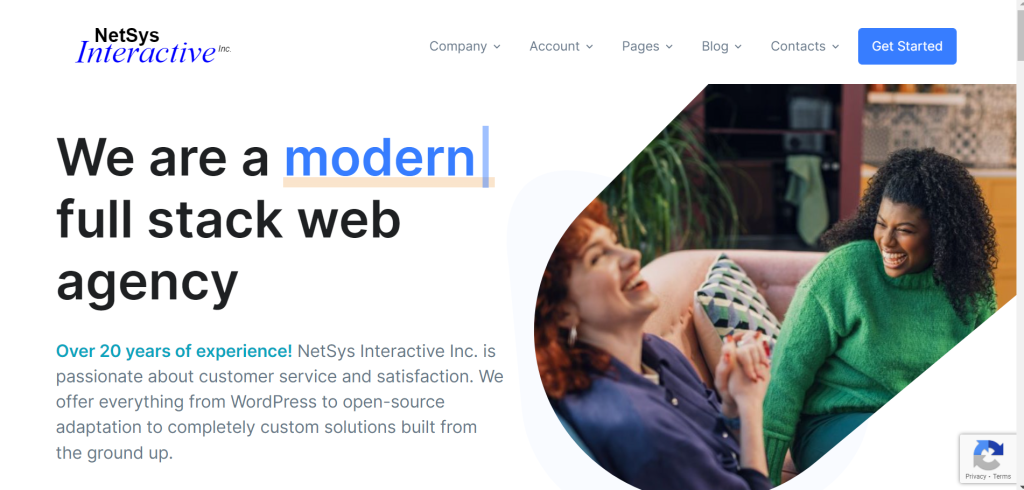Like most industries, a lot is going on behind the scenes of web design/development and a lot of history that most people are unaware of.

Before I get into it, I should first tell you a little bit about my background and how I got into the web design industry.
I’ve been building websites, writing code, and doing IT consulting since my first website in 1996. The changes I’ve experienced over the years have taught me to be both flexible and always prepared for the next shoe to drop. This industry is not for the timid and can be extremely frustrating and confusing for novices.
How I Got Started
I learned a lot by reverse engineering my first Ecommerce site. It involved a “so-called” professional web designer who built a shopping cart for me. I used a drop shipper to fulfill the orders. They were a nightmare to work with and too slow on fulfillment and customer service to be successful in that business at the time. Drop shipping has evolved dramatically since then, but that’s another topic.
Almost immediately, I started tinkering with the shopping cart interface and broke it multiple times as I learned how to hack the code. It was extremely simplistic programming compared to what we write these days. However, its simplicity allowed me to learn the basics and the hard lesson of how easy it is to break programming. I learned quickly that literally one missing or ill-placed character in code can easily break an entire page or website. We’ve all seen that dreaded, “This page isn’t working” 500 error.
That web design company now long gone was so impressed with my ability to hack the code that they offered me a job as a programmer. With my strong background in customer service, it wasn’t long before I became their programming manager. Eventually, they went under and I took over the accounts I had an established relationship with, and NetSys Interactive Inc. was born in 2002.
The Evolution of Web Design
Remember those god-awful early days of ugly web forms and hideous graphics? We’ve all seen the industry progress to the slick interfaces and gorgeous visuals of today. Back then there weren’t even screens on phones. I know, it was truly a dark time! I’m also old enough to remember landlines with corded phones and having to call the operator for assistance. I apologize if that brings up any traumatic memories for anyone.
Another change that came along in web design was the exact placement of items on the page. Think of X and Y coordinates from your high school geometry class. It gave us a lot more control visually and had a lot of promise. We could put any item exactly where we wanted on the page. I even created a website builder back then to do just that. It was click-and-drag placement on the screen.
Ironically, the introduction of smartphones eventually changed the web forever. In those early days of screens on phones, it was a struggle to develop sites for both. Initially, you had to move the page all around on a phone to see anything you were looking for. It was a horrible user experience! Eventually, we started detecting desktop versus mobile so we could design a different user experience for mobile.

It became a real pain in the neck and time-consuming to maintain versions for both. And that’s when the industry began to move away from exact placement too. Eventually, that evolved into the web of today where it’s more of a hybrid of those early concepts. The difference now is that everything flows around everything else and measurements are generally more percentages versus exact positions. If you want to see what I mean, do this little test.
See Fluid Web Design In Action
View this or any page on a desktop computer. Scroll down and pay attention to the right side. As well as the size and layout of everything on the page. Click that little square in the top right corner of your web browser. The web browser will shrink the viewable screen a bit. Take your mouse about halfway down the page. Move it over the right edge of the web browser until it becomes a left/right arrow. Simply click and drag it to make the screen smaller and then larger again.
Notice as you do this that the items on the page begin to flow around the available screen space. That whole right column gets pushed down below the main content and the main content boxes get smaller. Did you also notice that the menu disappears on the smaller size too? On some sites, the menu disappears completely and becomes a square with 3 lines in it. It is often referred to as the hamburger menu. Others use three dots or a custom icon.
DIY Web Design Tools
Another huge change in the industry has been DIY platforms like WordPress, open source, and starter code. I’ll save the discussion on the Pros and Cons of WordPress for another post. However, it is a good example of a DIY option for those on a tight budget, for a quick-start website, or for blogs. I would still strongly recommend tying in your own domain name. It’s better than using some website with a sub-directory for your name. It screams struggling business to the general public. People expect you to at least have your own domain name. It’s also much more professional for emails.
I always tell small businesses that there is nothing wrong with starting out with WordPress for your main business site. You should still plan on upgrading to something cleaner, faster, and more professional when you have the budget for it. Your website is your business card to the world. What are saying to your potential customers? The nice thing is that you can also write articles like this for your specific niche or industry in WordPress and later just turn off the other pages. Your new upgraded site can still link to the original “blog” posts. That ultimately helps your visibility on the web and your page rankings on sites like Google.
Prewritten Code & Open Source
Lastly are open source and prewritten packages of starter code. It has become common practice in the industry to utilize various starter and helper packages of code in projects. It’s easier than writing them from scratch. The advantage is faster development times, fewer repetitive tasks from one project to the next, fewer bugs, and less burnout for developers. One important caveat is that the developer ensures the original code creator gets proper credit for the use of their code in the project. And in some cases, the packages require payment to use them. It really just depends on the license that the code is released under.
Personally, I prefer to use a combination of open-source, paid packages, and our own custom development as a mix in web design. It gives us the ability to offer our customers more options, and faster development times. And yet we maintain the ability to customize it to the client’s exact needs or specifications. Not to sound judgemental or disparaging of web designers who only use WordPress or a similar DIY builder, but inevitably there are always limitations that come about over time.
Practical Advice
- Ask your web designer if they can write what you need from scratch or if they only use premade solutions like WordPress. As I said, it’s fine if you’re still just starting out or for use with a blog. Just know that eventually, you’re probably going to outgrow them as your needs become more evolved and sophisticated. If I was starting over again, I would try to find someone who offers both. That way I can get to know them and their level of professionalism with the cheaper option initially. When the time comes to go big with all kinds of bells and whistles to impress your customers. You’ll already have a vetted and trusted team to help you rocket your business to the next level.
- As with any company or individual you do business with. Be sure to check their reviews on Google. Most businesses generally have at least one hard-to-please reviewer that was less than happy. However, it’s easy to spot the shady, unskilled, or flaky web designers when reading their reviews. I’m not saying you shouldn’t give an up-and-coming web designer a chance. Just be aware going in that there is a certain amount of risk both financially and time-wise.
- Lastly, make sure they give you a written quote that includes all the items on your wish list. And don’t pay the full amount up front unless it’s dirt cheap! We charge 50% down and the rest is due at completion. It ensures that the customer can pay us for our time and hard work in bringing their vision to life. It also gives them the peace of mind that we are incentivized to finish as quickly as possible to ensure we get paid for the rest of the project. It’s a win-win for both parties.
Final Thoughts
I hope you found this post informative and if there are any other topics you would be interested in me covering, feel free to reach out. Click for more information about NetSys Interactive Inc. or any of our services. Whoever you go with for web design, I wish you all the best in your endeavors!